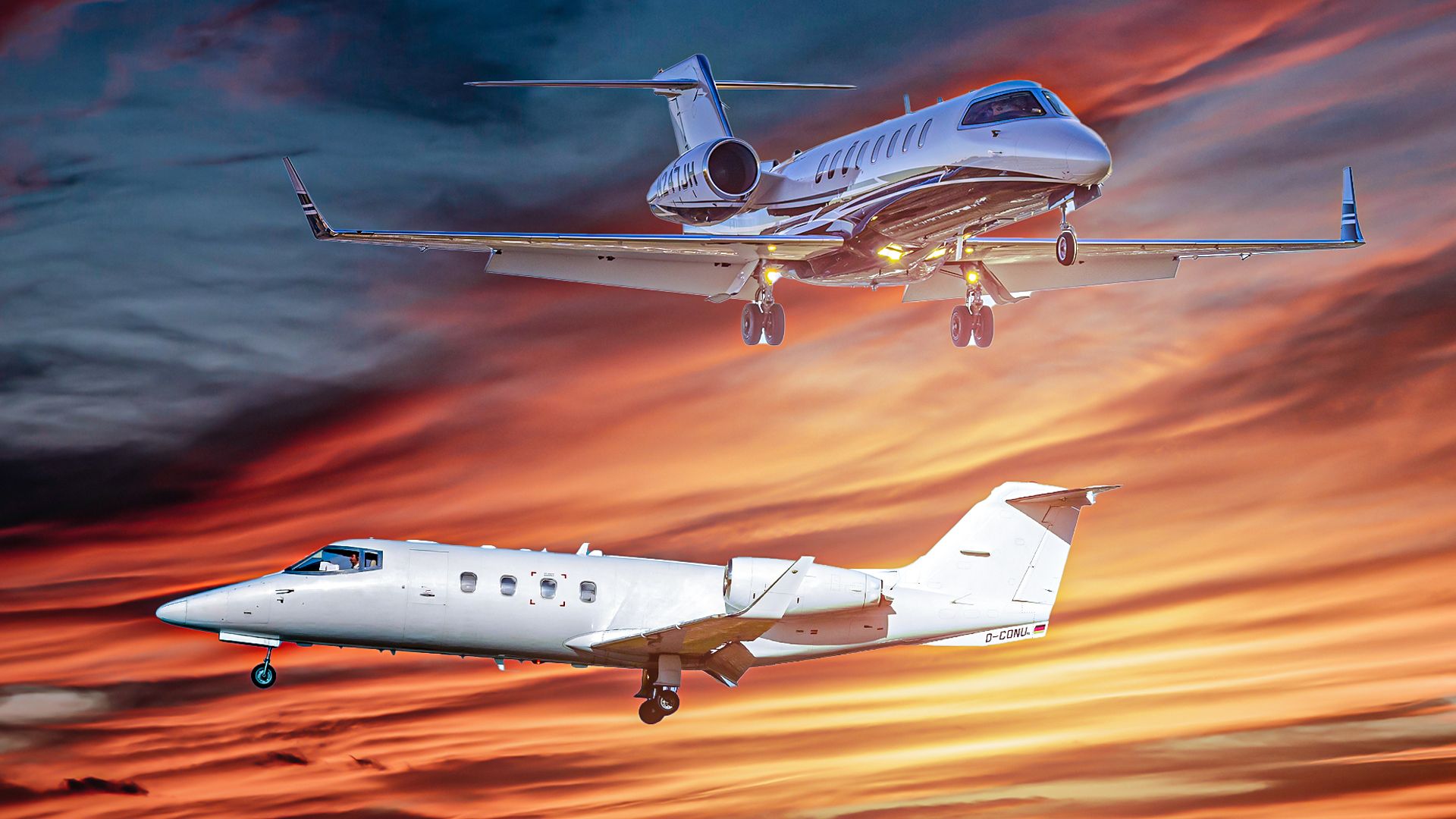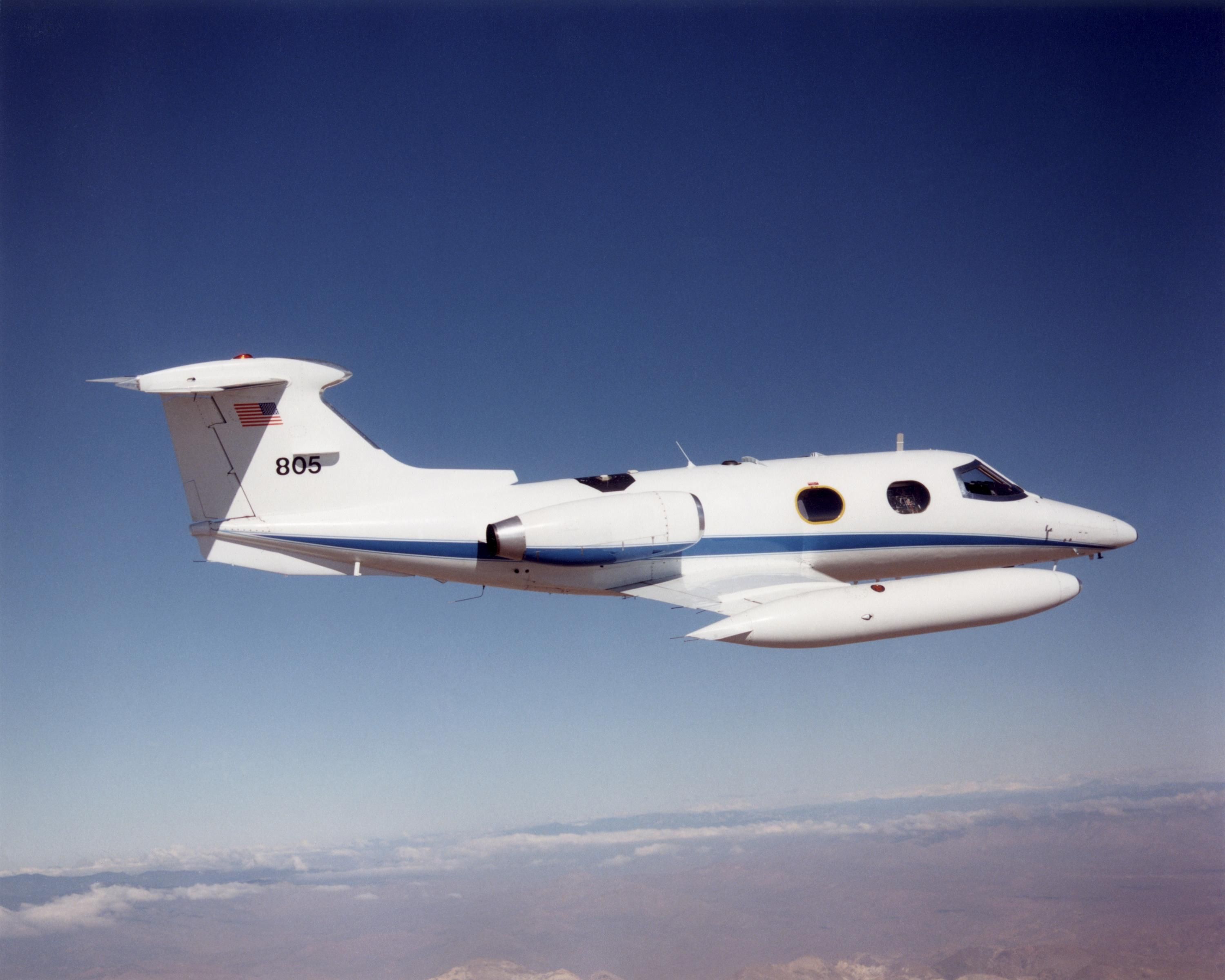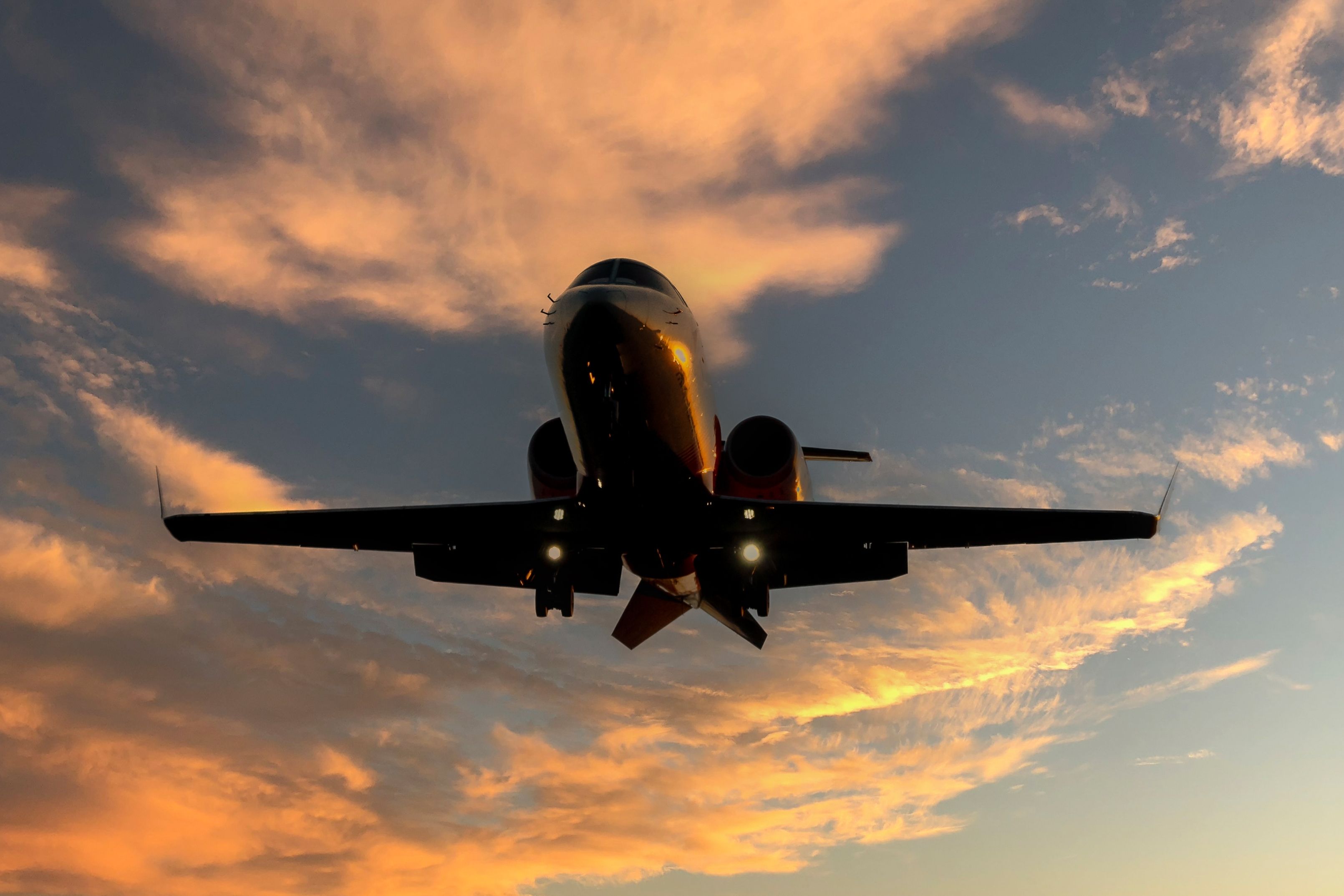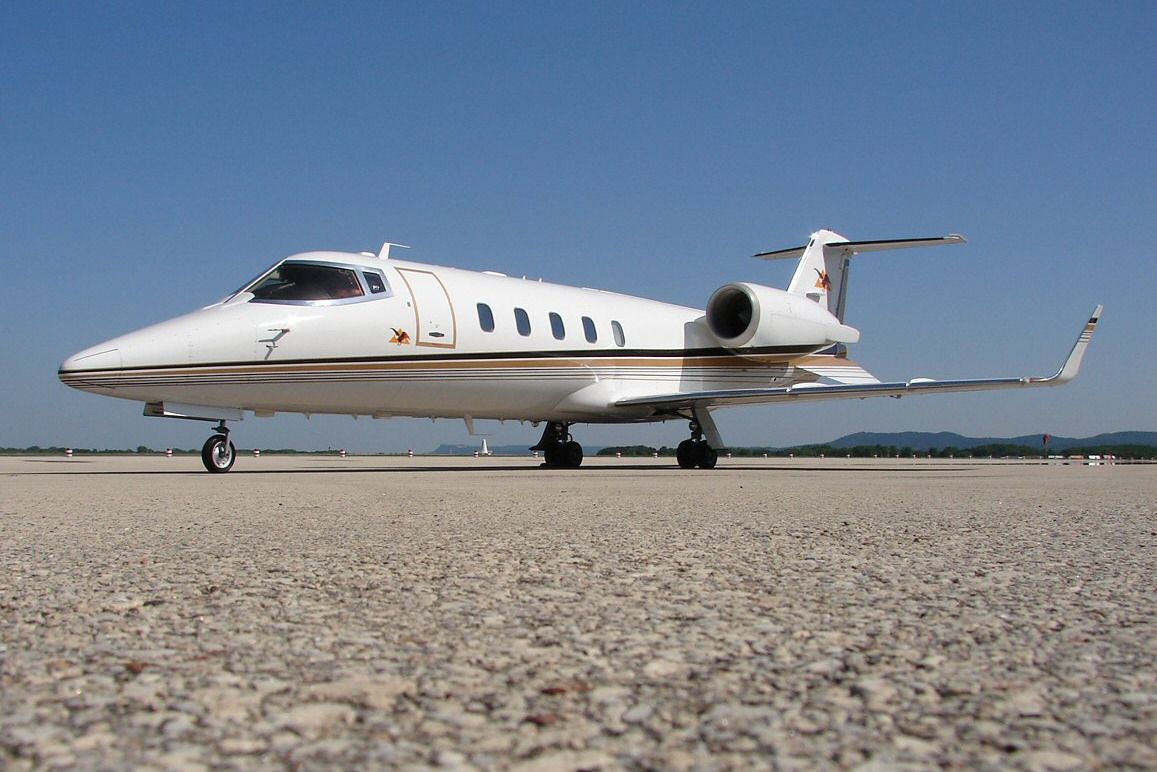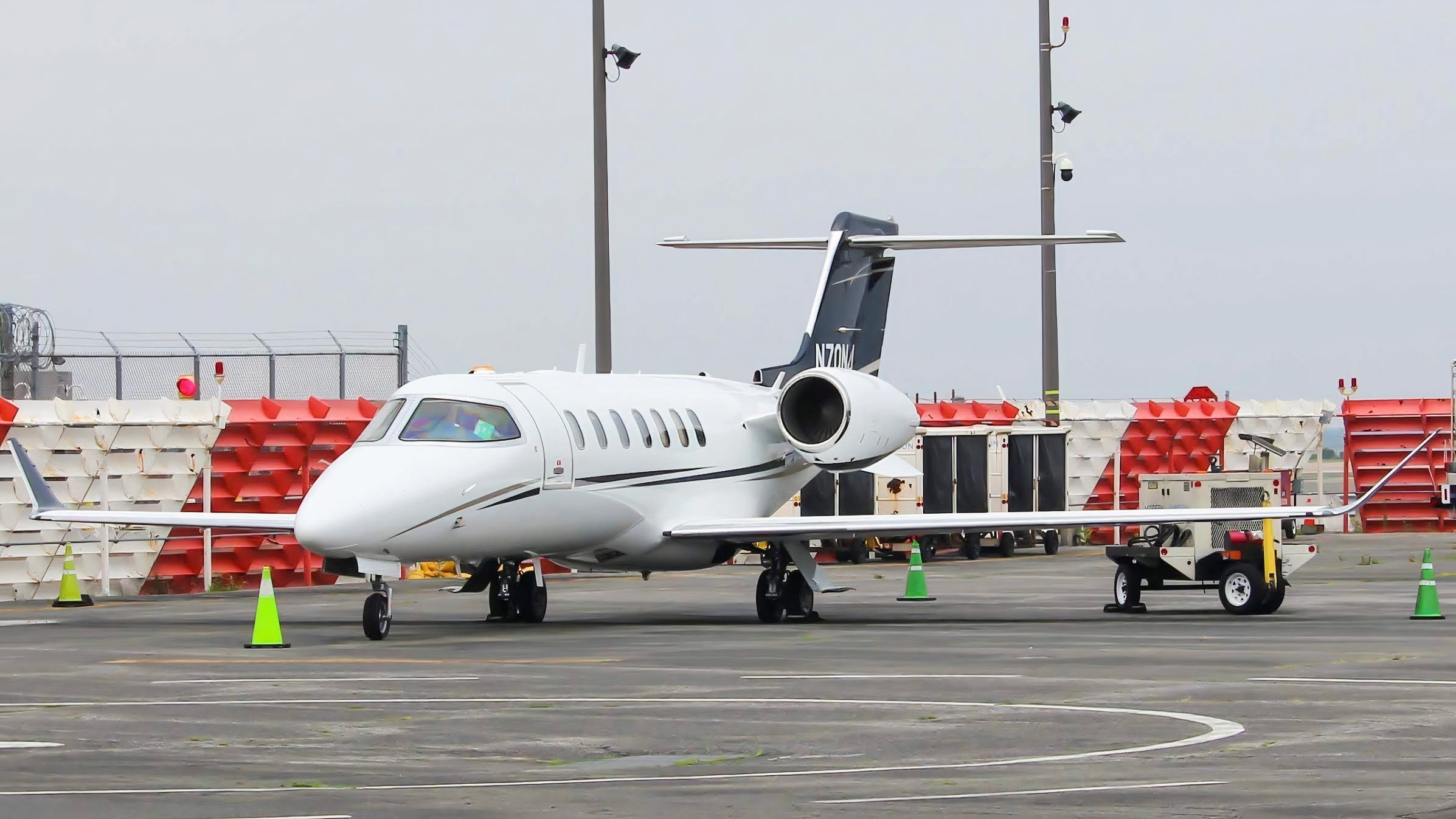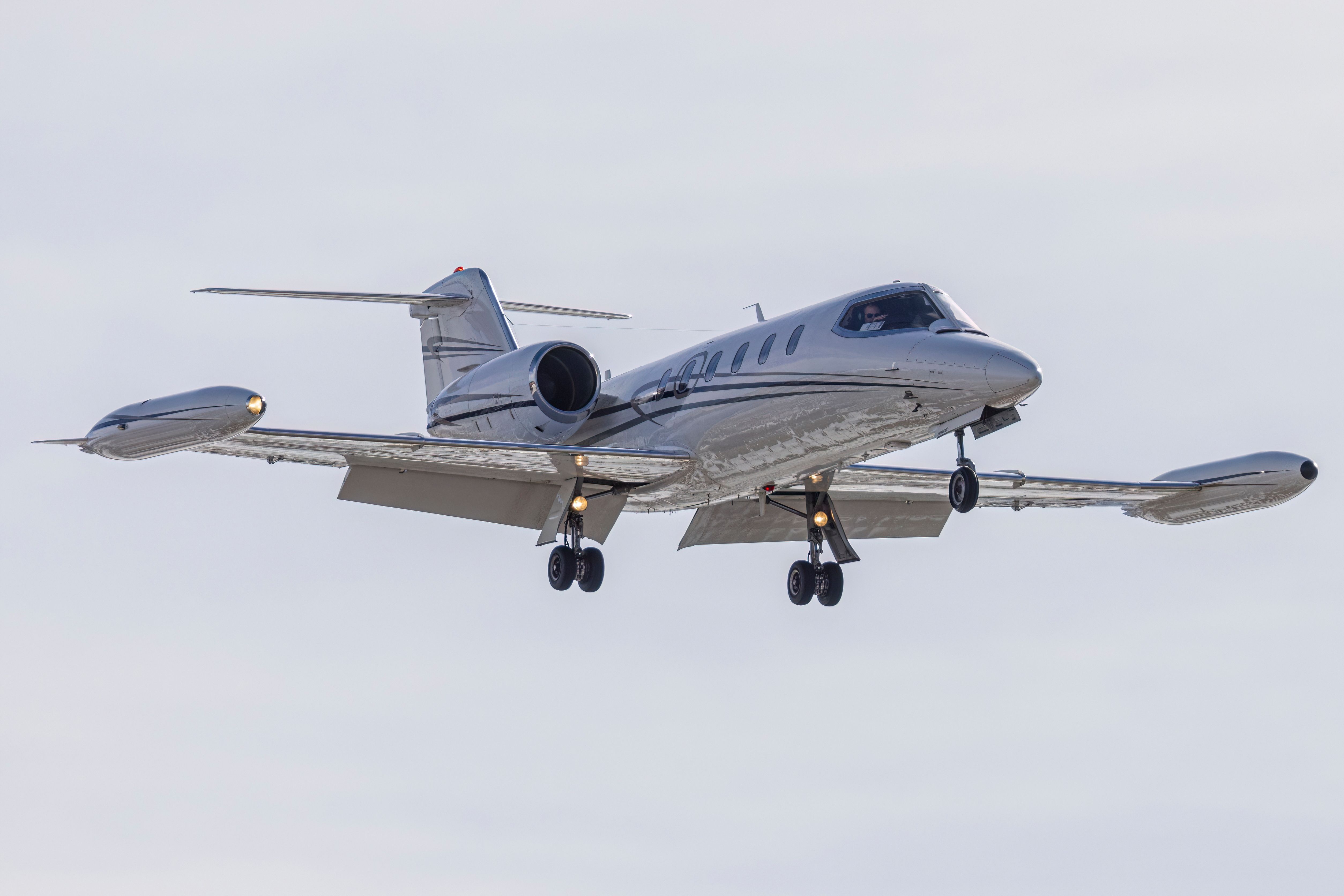Summary
- Learjet, founded in the 60s by Bill Lear, produced iconic luxury business jets like the Learjet 23, 28, 55, and more.
- After Bombardier’s acquisition in 1990, Learjet continued to innovate with models like the 45, 60, and saw worldwide success.
- Notable Learjet models like the Learjet 24, 25, 35, and 45 boasted powerful engines, luxurious cabins, and impressive ranges.
One of the most notable business jet manufacturers of all time is known as Learjet. It was one of the first manufacturers to begin producing a purpose-built business jet. Originally, the company was founded by the legendary aircraft designer, Bill Lear, in the 1960s. After working with the Swiss American Aircraft Corporation for several years, Lear moved his operations to Wichita, Kansas. This led to the development of the first business jet, which was designated the Learjet 23.
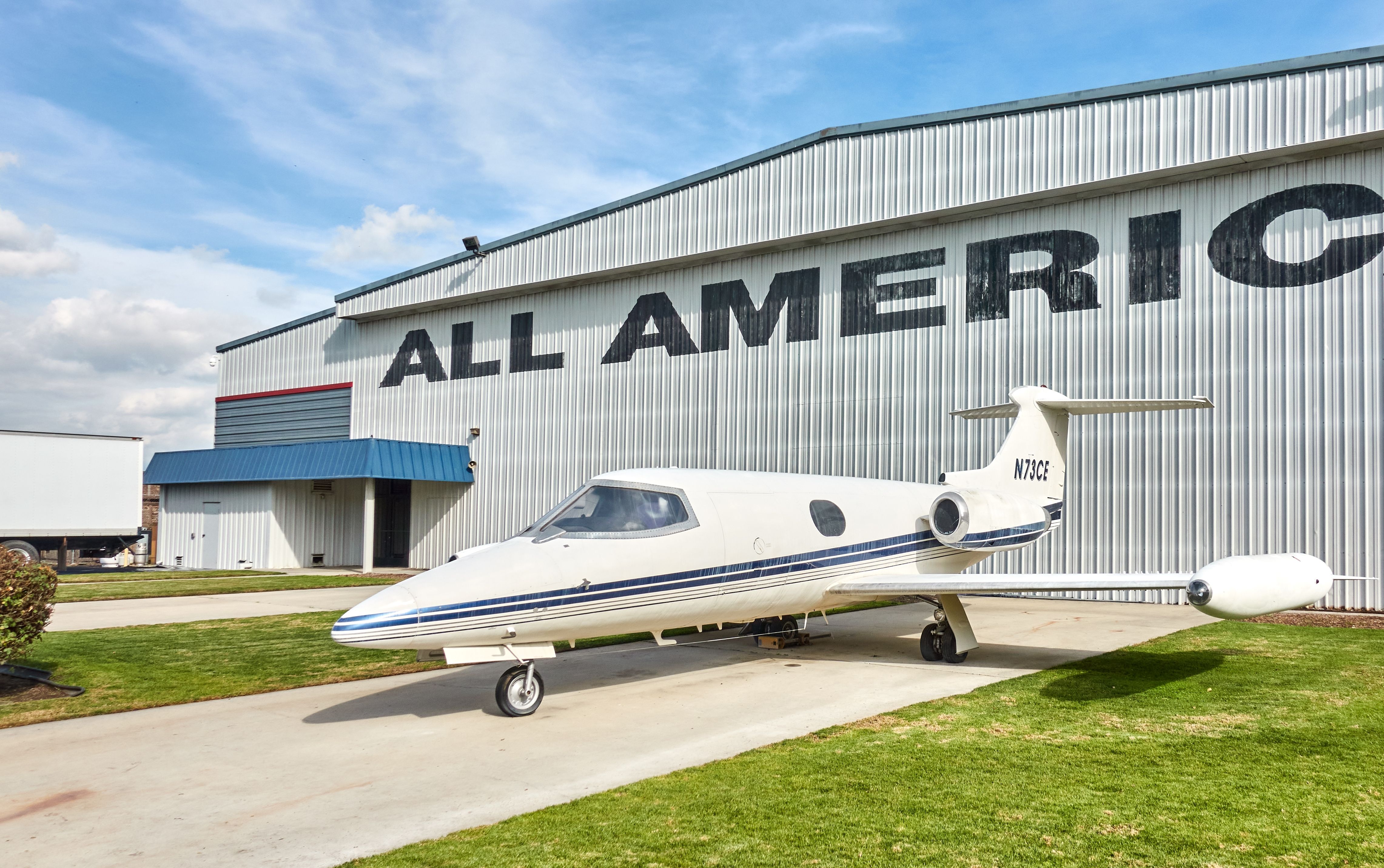
Related
The World’s First Luxury Private Jet: A Brief History Of Learjet
Learjet has been synonymous with luxury business jets for generations.
The purpose-built business jet designed by Lear saw immediate success. This led to the development of larger business jets, even as Lear’s share of the company was acquired by outside investors. The company was eventually acquired by Gates Rubber Company, when the company began developing the Learjet 28 and the Learjet 55.
Bombardier acquired Learjet in 1990. However, only the Learjet 60 and the Learjet 45 were introduced after the company was purchased by Bombardier. Eventually, in 2011, Bombardier announced it would cease the production of all Learjets. This halted the production of unique business jets that have been produced for nearly 50 years. However, these private jets saw success across the world. Let’s take a closer look at the most produced business jets that were built by Learjet.
5
Learjet 24
Aircraft built: 259 planes
|
Length |
43 feet three inches |
|---|---|
|
Wingspan |
35 feet seven inches |
|
Height |
12 feet three inches |
|
Maximum takeoff weight (MTOW) |
13,500 pounds |
|
Cruise speed |
418 knots (481 miles per hour) |
|
Range |
1,473 nautical miles (1,696 miles) |
|
Service ceiling |
45,000 feet |
The Learjet 24 was one of the first business jets that Learjet produced. It was originally introduced in November 1966. The Learjet 24 was an improved variant of the Learjet 23, but it featured several upgrades. These upgrades include updated engines, higher operating altitude, and wing tip fuel tanks.
The Learjet 24 was the first business jet to be certified by the FAA Part 25 standards. The aircraft was produced from 1966 to 1977, and it saw success with many civil operators.
4
Learjet 25
Aircraft built: 369 planes
|
Length |
47 feet seven inches |
|---|---|
|
Wingspan |
35 feet seven inches |
|
Height |
12 feet three inches |
|
Maximum takeoff weight (MTOW) |
15,000 pounds |
|
Cruise speed |
464 knots (534 miles per hour) |
|
Range |
1,535 nautical miles (1,767 miles) |
|
Service ceiling |
45,000 feet |
Learjet introduced the Learjet 25 in the late 1960s. It was developed from the Learjet 24, but featured a longer fuselage and several other upgrades. It was produced from 1966 to 1982.
Photo: AFuess | Shutterstock
The Learjet 25 was powered by two General Electric CJ610 engines that each provided nearly 3,000 pounds of thrust. Additional features of the aircraft include hydraulically controlled flight controls and an optional drag chute. The business jet saw success with civil operators, but it was also utilized by the Bolivian Air Force, the Mexican Navy, the Peruvian Air Force, and NASA.
3
Learjet 60
Aircraft built: 400 planes
|
Length |
58 feet eight inches |
|---|---|
|
Wingspan |
43 feet nine inches |
|
Height |
14 feet eight inches |
|
Maximum takeoff weight (MTOW) |
23,500 pounds |
|
Cruise speed |
421 knots (484 miles per hour) |
|
Range |
2,410 nautical miles (2,773 miles) |
|
Service ceiling |
51,000 feet |
The Learjet 60 was manufactured in the early 1990s after Learjet was already purchased by Bombardier. It was developed from the Learjet 55, although a new wing was designed and the fuselage was lengthened. It was officially introduced in 1993, and it was produced until Bombardier halted production in February 2012.
The newly designed wing was installed underneath the fuselage and featured a new wing fairing to increase the aerodynamics of the aircraft. The Learjet 60’s pylon also required a redesign due to the introduction of new Pratt & Whitney Canada PW305A turbofan engines.
2
Learjet 45
Aircraft built: 642 planes
|
Length |
58 feet |
|---|---|
|
Wingspan |
47 feet ten inches |
|
Height |
14 feet one inch |
|
Maximum takeoff weight (MTOW) |
21,500 pounds |
|
Cruise speed |
445 knots (510 miles per hour) |
|
Range |
1,710 nautical miles (1,968 miles) |
|
Service ceiling |
51,000 feet |
Learjet first introduced the Learjet 45 in the early 1990s, after the company was acquired by Bombardier. The new ownership wanted to introduce a light business jet that would compete with the successful Cessna Citation Excel family of aircraft. The first Learjet 45 conducted its maiden flight in October 1995, and it was introduced in 1998.
Photo: Noah Cooperman | Simple Flying
The Learjet 45 featured a flat-floor cabin that could fit up to nine passengers. It utilizes two Garrett TFE731 turbofan engines which each provide over 3,650 pounds of thrust each. Inside the cockpit, the Learjet 45 uses the Honeywell Primus 1000 EFIS avionics system.
1
Learjet 35
Aircraft built: 738 planes
|
Length |
48 feet eight inches |
|---|---|
|
Wingspan |
39 feet six inches |
|
Height |
12 feet three inches |
|
Maximum takeoff weight (MTOW) |
18,000 pounds |
|
Cruise speed |
418 knots (481 miles per hour) |
|
Range |
2,857 nautical miles (3,288 miles) |
|
Service ceiling |
45,000 feet |
The most successful, in terms of planes built, was the Learjet 35. The aircraft began as a concept of the Learjet 25 with larger engines. The company utilized a Learjet 25 with a new Garrett TFE731 turbofan engine instead of the Learjet 25’s original aircraft. The more powerful engines provided significant improvements to the jet, and Learjet decided to begin producing it as a separate model from the Learjet 25.
The Learjet 35 was introduced in 1973, and it was recognized as one of the fastest business jets in the world. It can fit a maximum of eight passengers. It also includes additional fuel tanks in the fuselage and wingtip fuel tanks for an increased range. The United States Air Force operates a variant of the Learjet 35 as a training aircraft, as well as medical transport.

